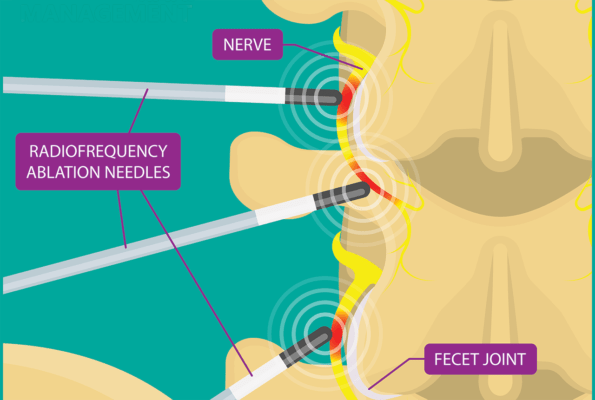Neck Nerve Ablation: Why Ablate When You Can Regenerate?
A revolution in medicine quietly occurred in the 90’s that didn’t make the press or get screamed from the mountaintops, but it was a game changer none the less. Smart people figured out that neck joints were being injured in what was amorphously known as “whiplash”. The revolution came when someone figured out that neck nerve ablation could help pain. However, now like all revolutions, medicine is evolving away from ablating to regenerating.

Rumruay/Shutterstock
Ablate means to destroy, so in the context of neck injections, radiofrequency ablation (RFA) is a technique where the doctor takes a probe that looks like a needle and places the tip near a nerve. The tip of the needle heats up and the nerve is “ablated” (destroyed). In the neck, the facet joints are the little finger sized joints in the back part. These joints can be injured in car crashes or just get arthritis with wear and tear and become painful. RFA is used to burn away the nerves that transmit pain signals, rendering the joint still painful, but unable to send a pain signal.
RFA has been a Godsend to many patients through the years, but in the context of a world with early regenerative solutions, you have to wonder if it will survive long-term as a pain management technique. For example, ablating the nerve in these joints is likely not without consequences. For example, that joint still has problems and the normal protective response the patient would usually use to “stay off” the joint and reduce wear and tear is removed by the procedure. Hence it’s likely that the pace of joint degeneration is hastened. With regenerative solutions like platelet rich plasma, super concentrated platelet rich plasma, platelet lysate, same day and cultured stem cells, why ablate when you have a hope to regenerate? Even if you can help the pain and only delay the predictable course of degeneration, that’s likely better than killing off nerves that were placed there for a reason (i.e. they not only relay pain signals, but they also do things like fine tune muscles that stabilize the area).
The upshot? RFA for chronic neck pain began a revolution. Like all things, as medicine evolves ablation will be replaced by regeneration. As a concrete example, we’ve mostly ditched ablation in our practice for newer and more promising regenerative spine injections!

If you have questions or comments about this blog post, please email us at [email protected]
NOTE: This blog post provides general information to help the reader better understand regenerative medicine, musculoskeletal health, and related subjects. All content provided in this blog, website, or any linked materials, including text, graphics, images, patient profiles, outcomes, and information, are not intended and should not be considered or used as a substitute for medical advice, diagnosis, or treatment. Please always consult with a professional and certified healthcare provider to discuss if a treatment is right for you.